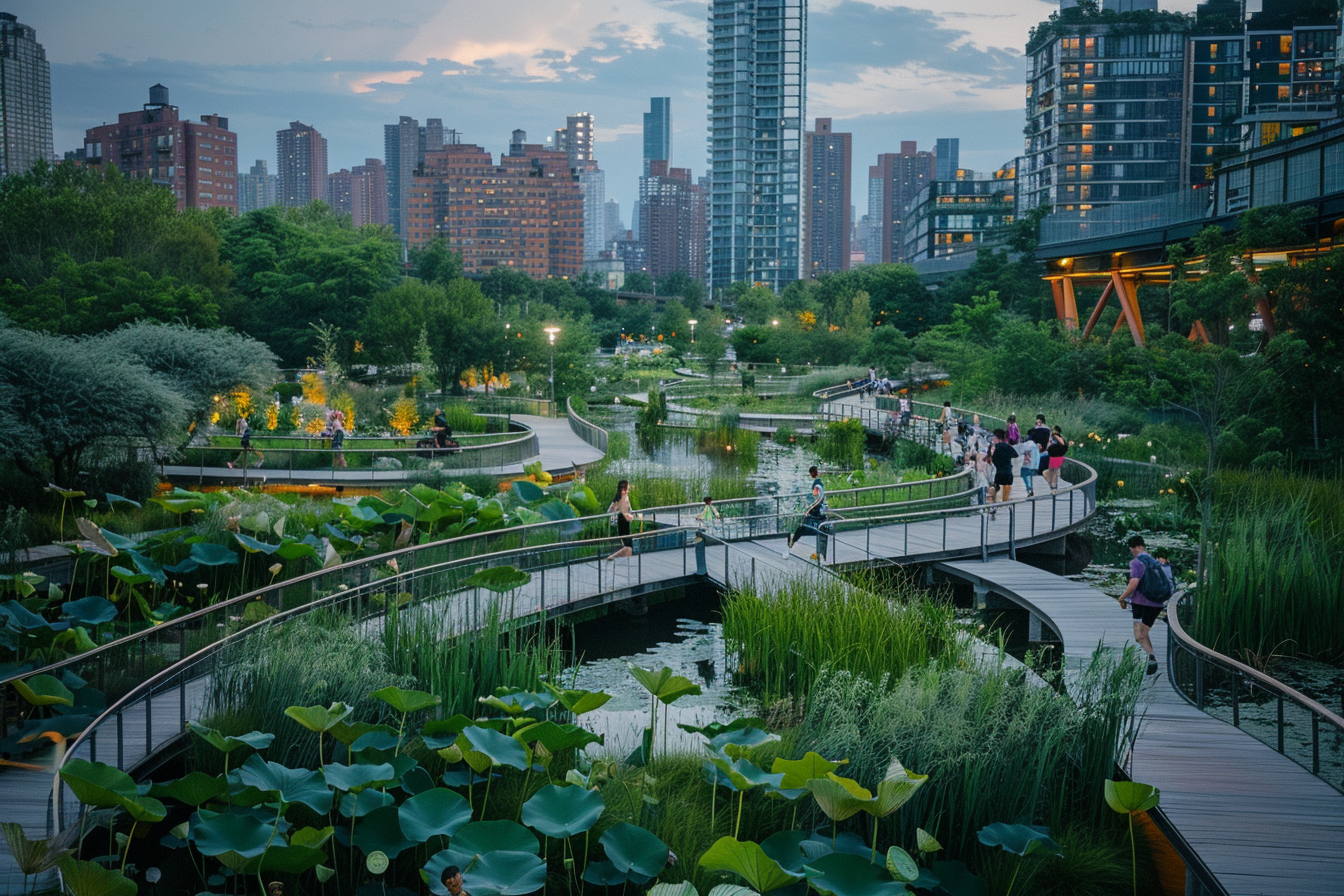Exposure to nature possesses a profound capacity to rejuvenate and enrich, offering a sanctuary of solace and vitality amidst the hustle and bustle of modern life.
In the New York Times article, “Big, Smoggy Bangkok Gets a Badly Needed Breath of Fresh Air,” Richard C. Paddock writes about the “breath of fresh air” that is the recently expanded Benjakitti Park.
After nearly half a century of polluting the air, the former cigarette factory has been thoughtfully transformed into a natural haven, offering solace and vitality to the community it once burdened with its emissions. “Now, that cancer-inducing complex has given way to something completely different: green space that has brought a breath of fresh air to Bangkok’s congested, often smoggy center,” writes Paddock.
The article continues to say that the site has been transformed into a 102-acre oasis for city dwellers, including “a mile-long elevated walkway, as well as water-purifying wetlands, 8,000 new trees, pickleball and basketball courts, and a dog-walking zone.”
From the serene tranquility of a forest to the invigorating embrace of a sun-kissed meadow, nature’s bounty nurtures both body and mind.
Scientific research continually underscores the therapeutic effects of nature, demonstrating its ability to alleviate stress, enhance cognitive function, and promote emotional resilience.
The question becomes, “how can urbanites access these health benefits?” Like Benjakitti Park, there is a need for urban planning to match community health needs and the functionality of an urban green space.
According to a study in the National Library of Medicine from the journal of Risk Management and Healthcare Policy, “Urban green spaces provide environmental benefits through their effects on negating urban heat, offsetting greenhouse gas emissions, and attenuating storm water. They also have direct health benefits by providing urban residents spaces for physical activity and social interaction, and allowing psychological restoration to take place.”
As we continue to explore the relationship between our surroundings and our health and well-being, urban planners, architects, and designers play a vital role in connecting us back to nature through the built environment.
Source: Paddock Richard C. “Author last name, First name. “Big, Smoggy Bangkok Gets a Badly Needed Breath of Fresh Air.” New York Times, May 11, 2024, https://www.nytimes.com/2024/05/11/world/asia/bangkok-thailand-benjakitti-park.html?smid=url-share
Source: Lee AC, Jordan HC, Horsley J. Value of urban green spaces in promoting healthy living and wellbeing: prospects for planning. Risk Manag Healthc Policy. 2015 Aug 27;8:131-7. doi: 10.2147/RMHP.S61654. PMID: 26347082; PMCID: PMC4556255.






